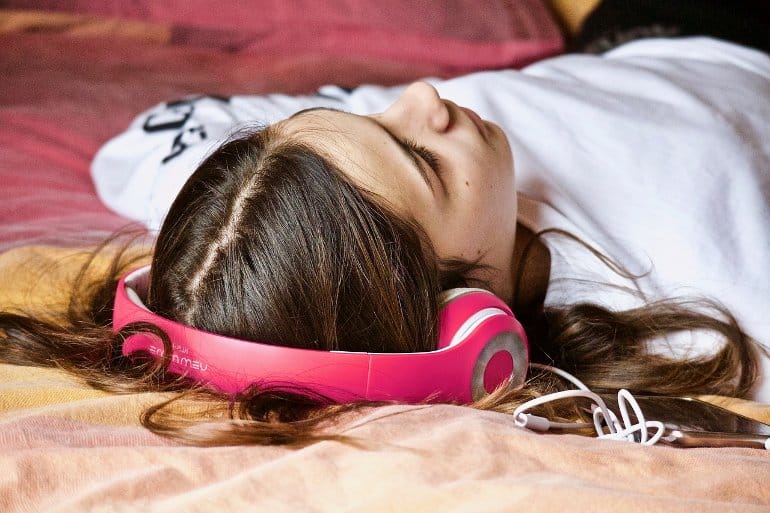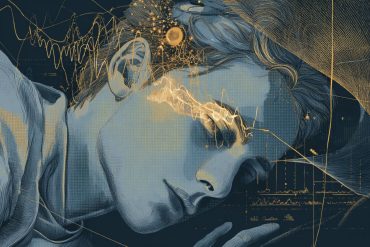Summary: While most people prefer to drift off to sleep listening to quieter and slower songs, some feel more relaxed when listening to familiar, high-energy popular music.
Source: PLOS
A new study has identified several characteristics typical of music associated with sleep, such as being quieter and slower than other music.
However, popular sleep music playlists on Spotify also include faster, louder, and more energetic tracks. Rebecca Jane Scarratt of Aarhus University, Denmark, and colleagues present these findings in the open-access journal PLOS ONE on January 18, 2023.
Many people say that they listen to music to help them fall asleep, raising the question of whether music chosen for this purpose shares certain universal characteristics. However, research on the characteristics of sleep music is limited, and prior studies have tended to be relatively small.
To better understand the characteristics of sleep music, Scarratt and colleagues analyzed 225,626 tracks from 985 playlists on Spotify that are associated with sleep. They used Spotify’s API to compare the audio features of the sleep tracks to audio features of music from a dataset representing music in general.
This analysis showed that sleep music tends to be quieter and slower than other music. It also more often lacks lyrics and more often features acoustic instruments. However, despite these trends, the researchers found considerable diversity in the musical features of sleep music, identifying six distinct sub-categories.
Three of the sub-categories, including ambient music, align with the typical characteristics identified for sleep music.
However, music in the other three subcategories was louder and had a higher degree of energy than average sleep music. These tracks included several popular songs, including “Dynamite” by the band BTS, and “lovely (with Khalid)” by Billie Eilish and Khalid.
The authors speculate that, despite their higher energy, popular songs could potentially aid relaxation and sleep for some people through their familiarity. However, more research will be needed to explore this possibility and identify the various reasons different people choose different music for sleeping.

Overall, this study suggests that there is no “one-size-fits-all” when it comes to the music people choose for sleep. The findings could help inform future development of music-based strategies to help people sleep.
The authors add: “In this study, we investigated the characteristics of music used for sleep and found that even though sleep music in general is softer, slower, instrumental and more often played on acoustic instruments than other music, the music people use for sleep displays a large variation including music characterized by high energy and tempo.
“The study can both inform the clinical use of music and advance our understanding of how music is used to regulate human behavior in everyday life.”
About this sleep and music research news
Author: Hanna Abdallah
Source: PLOS
Contact: Hanna Abdallah – PLOS
Image: The image is in the public domain
Original Research: Open access.
“The audio features of sleep music: Universal and subgroup characteristics” by Kira Vibe Jespersen. PLOS ONE
Abstract
The audio features of sleep music: Universal and subgroup characteristics
Throughout history, lullabies have been used to help children sleep, and today, with the increasing accessibility of recorded music, many people report listening to music as a tool to improve sleep. Nevertheless, we know very little about this common human habit.
In this study, we elucidated the characteristics of music associated with sleep by extracting audio features from a large number of tracks (N = 225,626) retrieved from sleep playlists at the global streaming platform Spotify. Compared to music in general, we found that sleep music was softer and slower; it was more often instrumental (i.e. without lyrics) and played on acoustic instruments.
Yet, a large amount of variation was present in sleep music, which clustered into six distinct subgroups. Strikingly, three of the subgroups included popular tracks that were faster, louder, and more energetic than average sleep music.
The findings reveal previously unknown aspects of the audio features of sleep music and highlight the individual variation in the choice of music used for sleep.
By using digital traces, we were able to determine the universal and subgroup characteristics of sleep music in a unique, global dataset, advancing our understanding of how humans use music to regulate their behaviour in everyday life.







